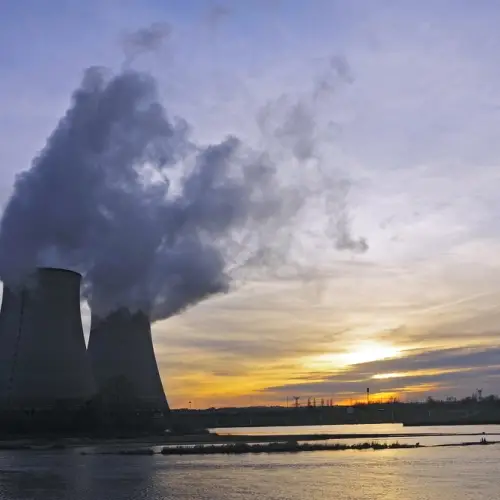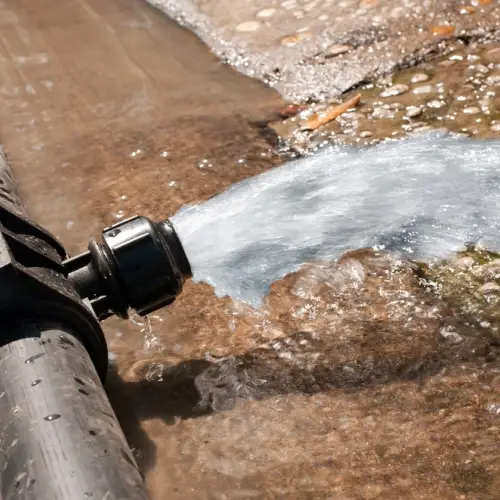
While the classical steam engine has largely been replaced by more efficient technologies such as internal combustion engines and electrical systems, steam technology remains essential, albeit in more advanced forms.
Some of the most notable current applications of the steam engine, or more specifically of steam turbines, are:
1. Generation of electricity in thermal power plants
The most important and widespread application of steam engines today is the generation of electricity in thermal power plants. Despite the transition to renewable energy, steam turbines remain a key technology in the global energy infrastructure.
These turbines are used in different types of electricity generating plants:
Fossil fuel power plants
In these plants, coal, oil or natural gas is burned to generate heat, which is used to produce high-pressure steam.
This steam drives a turbine connected to a generator that produces electricity. Although the use of fossil fuels is being reduced due to their environmental impact, many plants of this type are still in operation, especially in developing countries or countries in energy transition.
Nuclear power plants
 The fission of uranium or plutonium in nuclear power plants generates heat, which turns water into steam. This steam is used to drive turbines and generate electricity.
The fission of uranium or plutonium in nuclear power plants generates heat, which turns water into steam. This steam is used to drive turbines and generate electricity.
Steam turbines in nuclear power plants are extremely efficient and can generate large amounts of power continuously, making them one of the most advanced applications of steam technology today.
Solar thermal power plants
In this type of installation, the sun's energy is used to heat a fluid that generates steam, which drives turbines to produce electricity.
Although this type of energy is not yet as common as other forms of solar energy, it is gaining popularity, especially in regions with abundant solar radiation.
2. Geothermal power plants
Another modern application of steam technology is in geothermal plants, where heat from the Earth's interior is harnessed to generate steam.
This steam turns turbines connected to generators, producing electricity. Geothermal plants are a renewable source of energy, since the earth's heat is practically inexhaustible, and they represent a clean and efficient alternative to fossil fuel plants.
3. Naval propulsion systems
Although steam-based naval propulsion has largely been superseded by internal combustion engines and electrical systems, there are still some ships that use steam turbines.
This type of propulsion is common in certain military vessels, such as nuclear aircraft carriers and some submarines, which use nuclear reactors to generate steam.
The main advantage of this system is the ability to operate for long periods without refueling, which is essential for military operations at sea.
4. Chemical industry and industrial processes
 In the chemical industry and other industrial sectors, steam remains an indispensable tool for various processes.
In the chemical industry and other industrial sectors, steam remains an indispensable tool for various processes.
Steam is primarily used for heat transfer, disinfection and sterilization, and heating of large industrial facilities. In addition, steam turbines are used in many chemical plants and refineries to drive heavy machinery and production equipment.
-
Chemical production : Steam is key in the synthesis of many chemical compounds, as it is used to maintain controlled temperatures in chemical reactions. It is also used to clean and sterilize reactors and equipment, ensuring the purity of chemicals.
-
Oil refineries : In refineries, steam is used in fractional distillation to separate the different components of crude oil. This process requires large amounts of heat, which steam can efficiently provide.
5. Cogeneration plants
Cogeneration plants, also known as combined cycle plants, are facilities where thermal energy and electricity are produced simultaneously from the same process.
In these plants, gas turbines generate electricity and the waste heat they produce is used to generate steam, which drives an additional turbine to generate more electricity or is used for heating.
This system is highly efficient, as it takes advantage of the heat that would normally be lost in a conventional plant, thereby reducing energy waste.
6. Use in textile and paper industries
Steam also continues to play an important role in traditional industries such as textiles and paper.
In these industries, steam is used to dry products, as the heat generated by steam is more controllable and uniform than other heat sources. In addition, steam is used in the pressing and ironing of fabrics, as well as in paper production, where it is used to dry cellulose sheets.
7. Steam trains for tourist and heritage use
Although steam trains are no longer used for regular passenger or freight transport, there are still many tourist railway lines that use steam locomotives.
These trains have become historic attractions that allow visitors to experience the technology that fueled the Industrial Revolution. Preserved or restored steam locomotives often operate on short routes in national parks, mountainous areas, or on railway lines preserved as industrial heritage sites.
8. Water desalination
 Steam technology is also used in some desalination plants to convert seawater into drinking water.
Steam technology is also used in some desalination plants to convert seawater into drinking water.
The multi-stage distillation process uses steam to heat seawater and evaporate the water, leaving the salt behind. The steam is then condensed to recover fresh water. This method, although less common than other desalination processes such as reverse osmosis, is still useful in areas where thermal energy is readily available.
Technological advances in the use of steam
The use of steam today has evolved greatly thanks to advances in engineering and technology. While older steam engines were bulky and less efficient systems, modern steam turbines are compact and extremely efficient. Some of the advances include:
- Improved thermal efficiency : Today's steam turbines operate at much higher temperatures and pressures than older steam engines, allowing for greater conversion of thermal energy into mechanical energy. This increase in efficiency has kept steam-based plants competitive with more modern technologies.
- Advanced Materials : The introduction of heat and corrosion resistant materials has allowed steam turbines to withstand extreme conditions without losing efficiency or requiring frequent maintenance.
- Combined cycle : Combined cycle plants, which combine gas turbines and steam turbines, make it possible to make the most of the available energy, reducing fuel consumption and emissions.
The future of steam technology
Although the use of traditional steam engines has declined, their evolution in the form of turbines remains relevant in a world seeking cleaner and more efficient sources of energy. The combination of steam technologies with renewable energies, such as solar thermal and geothermal, suggests that steam will continue to play an important role in the global energy future.
As the world moves toward greater sustainability, renewable-based steam technologies offer a promising avenue for reducing greenhouse gas emissions while maintaining the ability to produce energy efficiently and reliably.